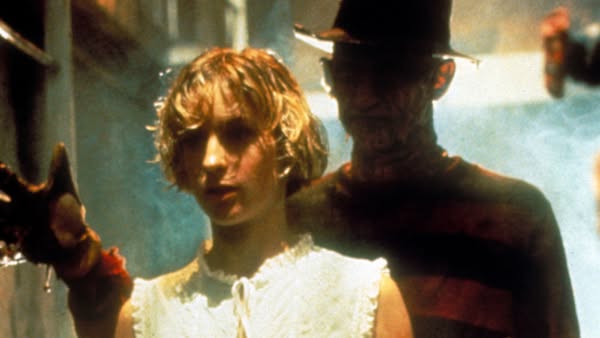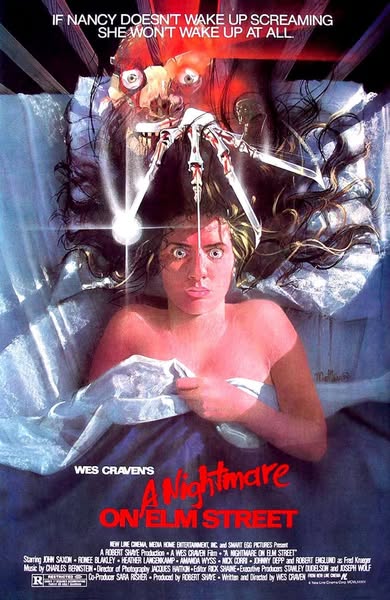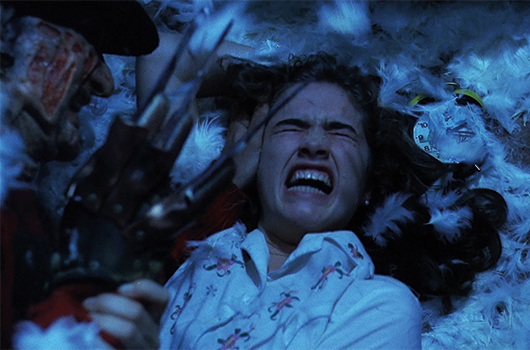A Nightmare on Elm Street (1984)

A Nightmare on Elm Street (1984), directed by Wes Craven, is a groundbreaking horror film that has left an indelible mark on the genre. With its innovative premise and unforgettable villain, the film explores the intersection of dreams and reality, tapping into primal fears that resonate with audiences.
The story revolves around a group of teenagers in the fictional town of Springwood, who are haunted by the terrifying figure of Freddy Krueger (played by Robert Englund). A disfigured child murderer, Krueger was killed by vengeful parents in the neighborhood but returns in the dreams of their children, where he wields the power to manipulate their nightmares and kill them while they sleep. This chilling premise introduces a new layer of terror, as the characters must confront the reality that sleep—something typically safe—can become a deadly battleground.

The film’s protagonist, Nancy Thompson (played by Heather Langenkamp), emerges as a resourceful and determined survivor. As her friends begin to fall victim to Krueger, Nancy becomes increasingly aware of the danger and takes it upon herself to confront the nightmare. Her journey from a typical teenager to a fierce fighter against evil transforms the narrative into a compelling tale of resilience.

Craven’s direction is both innovative and atmospheric, utilizing creative camera techniques and practical effects to create a sense of dread and surrealism. The film’s dream sequences are particularly memorable, blending reality with nightmarish imagery that keeps viewers on edge. The iconic score by Charles Bernstein enhances the film’s tension, with its haunting melodies and unsettling rhythms.
Freddy Krueger has become one of horror’s most recognizable figures, characterized by his razor-sharp glove, distinctive fedora, and sardonic humor. Englund’s portrayal brings depth to the character, transforming him from a mere monster into a complex figure driven by revenge. This duality adds layers to the horror, as audiences are both terrified and intrigued by his malevolent charm.

In conclusion, A Nightmare on Elm Street is a seminal work in horror cinema that redefined the genre. Its innovative blend of dream and reality, coupled with memorable performances and a captivating villain, solidified its status as a classic. Craven’s ability to tap into universal fears of helplessness and the unknown resonates deeply, making the film not just a tale of terror, but also a commentary on the fragility of safety in everyday life. As a result, it continues to influence filmmakers and frighten audiences, ensuring its legacy endures across generations.











